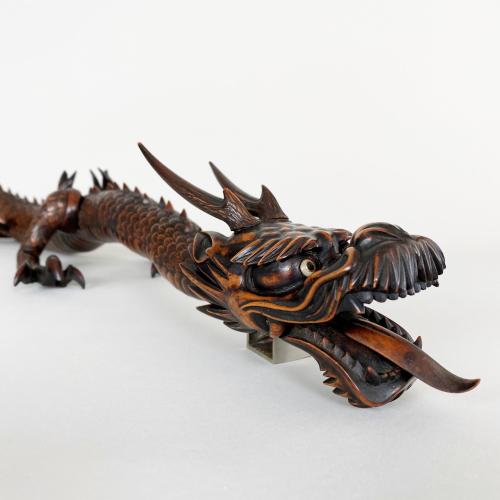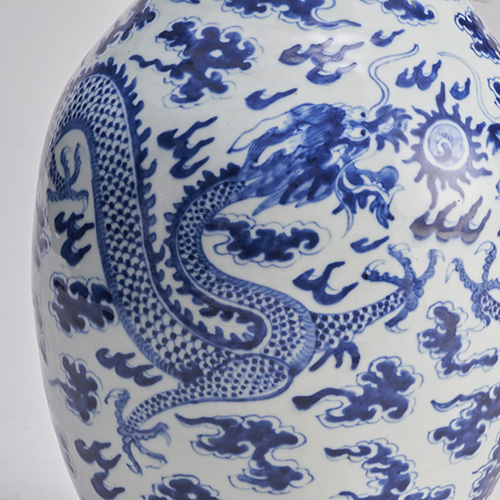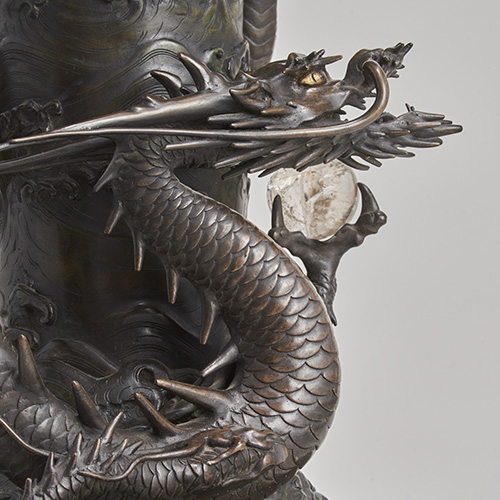

2024 is the Year of the Dragon!
With grateful thanks to BADA member Kevin Page Oriental Art.
The Chinese Zodiac calendar assigns one of the five elements of Metal, Water, Wood, Fire and Earth to each year. The complete cycle takes 60 years to complete and this year we are entering the Year of the Wood Dragon.
The Wood Dragon is seen to represent power, nobility, honour, luck and success. It is forecasted that 2024 will bring opportunities, change and in some cases, challenge. Saying that, it is also believed that those born in the Year of the Dragon have a natural courage, tenacity and are full of confidence.
In Chinese culture, the Dragon is hugely significant and it is the most revered and powerful of the four divine spirit creatures. (The other three are the Qilin, the Phoenix and the Tortoise.) The Dragon is the most important and most frequently used symbol in Chinese art and is instantly recognised as a symbol of China. The Dragon was historically used by the Emperor as a display of his power and strength.
 The appearance of the Dragon has undergone little alteration since it became one of the twelve Chinese Sovereign Symbols under the reign of Emperor Shun (2317 – 2208BC.). In Chinese art, the Dragon takes the form of a scaley four-legged Serpent with dorsal spines, horns and whiskers and long flaming streamers from the shoulders and hind quarters.
The appearance of the Dragon has undergone little alteration since it became one of the twelve Chinese Sovereign Symbols under the reign of Emperor Shun (2317 – 2208BC.). In Chinese art, the Dragon takes the form of a scaley four-legged Serpent with dorsal spines, horns and whiskers and long flaming streamers from the shoulders and hind quarters.
It is something of a Chimera with a head resembling that of a Camel, Tiger paws, Deer horns and Carp-like scales. It also is believed to have a pearl under its chin which makes its call sound like a ringing Gong.
The Chinese word for Dragon is “Lung” or “Long” which is also the word for being deaf. The origin of this is that it is believed that Dragons cannot hear but they use their horns to sense sounds and movement around them.
In Japanese culture, the Dragon has a similar importance and is also the symbol of the Emperor. The Dragon often adorned the armour of Samurai Warriors and it appeared in many popular myths and legends. It is very similar in appearance to the Chinese Dragon albeit with some subtle differences. Japanese Dragons often have longer snouts and appear more snake-like.
 The main difference though is that Japanese Dragons only have three toes whereas Chinese Dragons have either four or five. Chinese legend has it that the Dragon was born in China and would lose toes the further it travelled from home. Rather amusingly, in Japan it is thought that Japanese Dragons would gain additional toes, the further they travelled from Japan so they started with three but would have four or five by the time they reached China.
The main difference though is that Japanese Dragons only have three toes whereas Chinese Dragons have either four or five. Chinese legend has it that the Dragon was born in China and would lose toes the further it travelled from home. Rather amusingly, in Japan it is thought that Japanese Dragons would gain additional toes, the further they travelled from Japan so they started with three but would have four or five by the time they reached China.
Across Asia, Dragons are associated with water rather than with fire as they are often depicted in the West. Asian Dragons are rulers of weather and the Sea and as such they do not need wings in order to fly. Here in the West, we typically portray Dragons as aggressive Monsters whereas in the Far-East they are generally seen as creatures of great wisdom who often help humans and as such, they are regarded as lucky.
Click here to view further examples of the use of dragons in Asian Art from BADA Members.
Click here to view stock from Kevin Page Oriental Art.
Click here to enjoy additional articles and blogs from Kevin Page Oriental Art.

